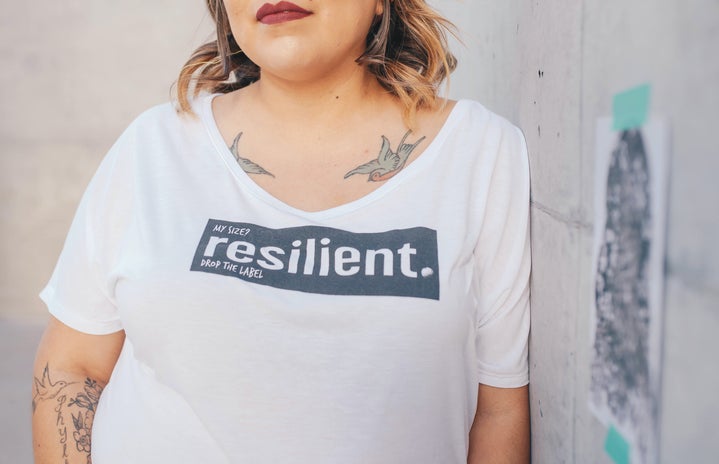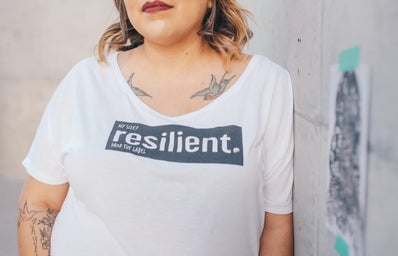I was never really much of a tampon girl, but they sure beat pads for me. I’d take sticking a wad of cotton up my hoo-hah over walking around in a diaper any day. They weren’t great, though. On heavy days, I would leak onto my underwear no matter how hard I tried to keep up with it and on lighter days, I’d find myself with half-dry tampons which are not at all easy (or comfortable) to remove. Now, when you hear about menstrual cups, you may be thinking that they’re messy, gross, and difficult to use. You might wonder how you could possibly fit an entire CUP up there without it causing some serious pain. Why change now when what you’ve been doing forever works just fine? I asked myself these same questions. But one thing to know about me is that my curiosity tends to get the best of me. So when Her Campus sent our chapter a Diva Cup to try out, I decided to take one for the team and took it home with me that night. And I haven’t used a tampon since.
1. They’re actually really easy to use.
Although not all menstrual cups are exactly the same, they are similar enough that they can all be inserted in one of two ways. The first is the fold the cup in half so that it looks like a “U” or to press one edge down (kind of like a triangle) making the opening edge very small and the base larger. Folded these ways, the cup becomes only a tiny bit larger than your average tampon is. By keeping a tight grip on the base of the cup, you can just push it in like you would a tampon until you can’t feel it anymore. If you’re not super comfortable with your body or your “area”, take this as a chance to get acquainted! After inserting, grab the base of the cup and spin it one time to ensure it is correctly positioned. This can take a little practice but once you get the hang of it you are good to go. The cup should spin easily and not catch on anything or feel painful. This helps ensure that the cup is “sealed” and that there aren’t any gaps for blood to leak past the cup. Since I have used the cup, I have not EVER had a leak.
2. They can stay in longer!
Most menstrual cups are made of mostly, if not entirely, medical grade silicone. A cotton tampon is a great place for bacteria to start growing and can lead to potentially life threatening Toxic Shock Syndrome. With the cup though, there isn’t anywhere for bacteria to begin multiplying, meaning it is safe to leave the cup in for longer periods of time. The Diva Cup manual recommends changing at least every 12 hours, however this is mainly due to concerns about the cup becoming too full and becoming difficult to remove without a mess as opposed to concerns about personal safety. Most cups can hold about 30 mL of fluid whereas a tampon can hold around 9mL and may begin leaking before that. For me, being able to leave my Diva Cup in for the entire day, changing it when I take a shower at night and when I get up in the morning, has been a huge stress reliever. To remove it, you just pull it out from the base and dump it in the toilet or shower. As long as you empty it before it becomes super full (and it holds a lot so that would take awhile), you won’t have any kind of mess. Then you can just rinse and reinsert.
3. No more chemicals or irritations.
Tampons do not just absorb blood, but also absorb the natural fluids that keep your vagina healthy. This can lead to vaginal dryness, irritation, and changes in pH which can cause itchy yeast infections or bacterial vaginosis. Silicone menstrual cups are a much gentler alternative as the material easily slides in and out rather than getting caught or stuck (no more prying out dry tampons for me!). The Diva Cup itself is dye and chemical free, leaving no residues in the vagina that could cause irritation or infection.
4. They’re SO MUCH CHEAPER.
One menstrual cup will run you about $25-30 and they last for YEARS. That’s hundreds of dollars in savings! The only downside here is that after each cycle, you need to sterilize the cup by boiling it. You could probably get away with a good scrubbing with a mild cleanser, but sterilization is recommended. This is a really easy process though that (I think) is totally worth it for the savings.
5. They’re environmentally responsible.
Studies have found that women throw away up to 150 kg (331 pounds) of tampons, pads, and applicators in a lifetime. Many applicators are plastic and therefore are not biodegradable and some of the chemicals in pads and tampons that make them absorbent are toxic for the earth. Reusing a single silicone cup makes for much less waste and you’ll never need to carry around extra pads or tampons ever again.
Thinking that a menstrual cup might be right for you? Learn more about Diva Cup (the brand I use and the generally most popular brand) here.

